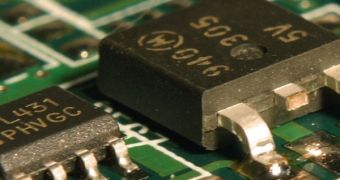IBM's upcoming High-K Metal Gate micro-technology will bring faster and more energy-efficient chips built on the 32-nanometer processing node. The miraculous technology will replace the existing polysilicon gate and the silicon-dioxide gate dielectric with more efficient, hafnium-infused metal gates and dielectrics.
According to the company, the advent of the High-K technology would allow the companies to achieve 35% more performance and up to 45% less power as compared to the currently existing 45-nanometer production node.
Despite the estimations, the 35 percent increase in performance would not account for 45 percent less energy, and the real-life scenario will be a compromise between the increased performance and lower power consumption.
IBM also managed to integrate the High-K Metal Gate technology into the 32-nanometer process at its US-based fabs. More than that, the semiconductor alliance (comprised of IBM, Chartered, Freescale, Infineon, Samsung, STMicroelectronics and Toshiba) is ready to serve the first batch of customers.
"Customers may now design in this leading edge, low power foundry technology in order to help speed time-to-market and help realize power-performance advantage for their products," said an IBM spokesperson. The company also claimed that the the 32-nanometer processing node can be further extended to the 22 -nanometer technology.
Intel was the first semiconductor manufacturer to produce High-K Metal Gate chips. On the other side of the fence, IBM will release its 32 nm processors in late 2009, while samples of its 22-nanometer technology will be unveiled in early 2009.
Another select member of the 32-nanometer alliance was Intel's Arch-rival AMD. However, IBM did not mention it as a partner in the press event, as Advanced micro Devices has announced that it could introduce High-K Metal Gate on the 45-nanometer node by itself, if the market conditions impose that move.

 14 DAY TRIAL //
14 DAY TRIAL //